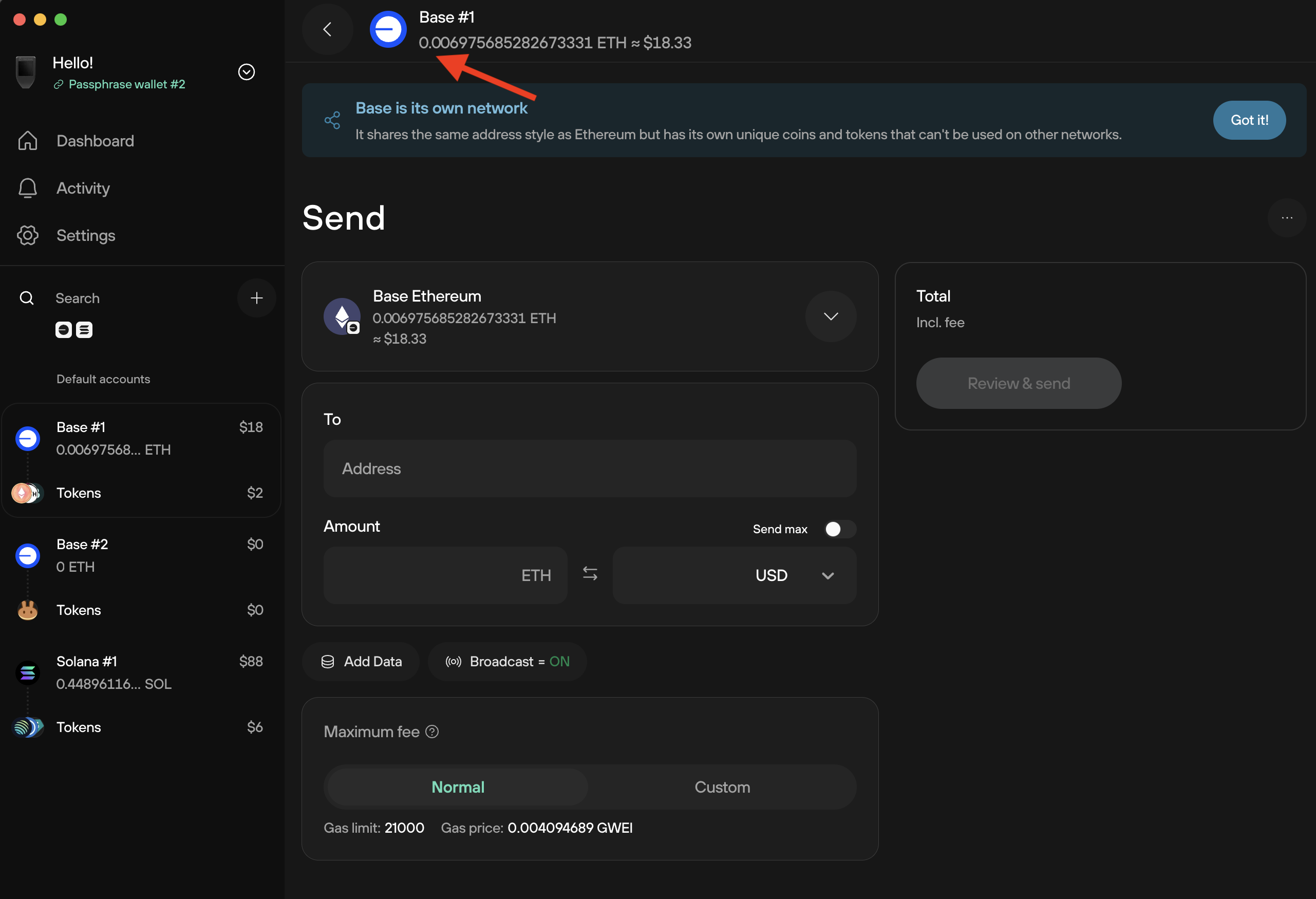All articles
Optimism, Arbitrum One & Base in Trezor Suite
Layer 2 solutions allow transactions to be faster and cheaper while realizing the benefits of Ethereum’s security. For more information about Layer 2 solutions, why you should use them and how they work, please read our article called What is Layer 2?
Optimism, Arbitrum One & Base are based on Optimistic rollups - Layer 2 scaling solutions that process transactions off-chain and post summarized results to the main blockchain, reducing congestion and lowering fees. They rely on an “optimistic” assumption that transactions are valid unless challenged, with security ensured through fraud proofs on the Layer 1 network.
Because Optimism, Arbitrum One, and Base have significantly faster block times, transactions are considerably faster than on the main Ethereum blockchain. Their design also makes transactions significantly cheaper.
How do I use Optimism, Arbitrum One & Base in Trezor Suite?
Optimism, Arbitrum One, and Base are EVM-based blockchains, meaning they use the same address as your Ethereum account.
To add Optimism, Arbitrum, or Base to Trezor Suite, follow these steps:
- Click on the plus [+] symbol on the left pane:
- Choose your desired EVM from the list, confirm the selection by clicking on the assets you would like to add, and find those accounts by pressing the green button at the bottom of the screen
- Your Layer 2 EVM account is now listed among your default accounts.
ETH is the native coin on Layer 2 EVM chains. In Trezor Suite, Layer 2 network accounts display the ETH balance with the Layer 2 EVM’s logo, distinguishing it from mainnet ETH.

Transactions on Optimism, Arbitrum One & Base
Layer 2 EVMs rely on ETH as their primary system token but feature faster block times and significantly lower transaction fees compared to the Ethereum mainnet.
For example, to make a transaction on Optimism, users must have ETH on the Optimism network to cover the fees. While Optimism and Arbitrum One also have their own tokens, these are standard ERC-20 tokens, not system tokens. Base, on the other hand, does not currently have its own native token.